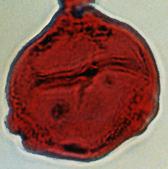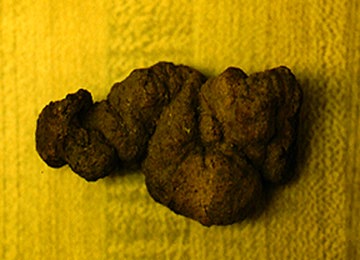The main evidence gathered by archaeologists and anthropologists for research in past dietary and cultivation habits is through pollen microfossils. This study is called archaeological palynology.
Archaeological Palynology: The study of pollen grains and other spores found in archaeological or geological deposits.
Some key archaeological sites for this study are Salmon Ruin in New Mexico, Antelope House in Canyon de Chelly and Hinds Cave in Texas.
Tritoporate Pollen Grain
Pollen evidence can indicate areas of cultivation and trace the rise and decline of types of plants being cultivated by past civilizations.
An anthropologist's study in the history of agricultural exchange between communities can be aided by palynology. This history can be mapped out through studies of foreign pollen microfossils at sites. Through the abundance or scarcity of species of pollen at a site, links can be made between sites.
Pollen microfossils are found in ancient garbage heaps in the remains of meals. This helps to determine the dietary habits of past cultures. Coprolites also help with dietary studies because they hold pollen microfossils from past meals.
Coprolites: Fossilized feces
Coprolite

